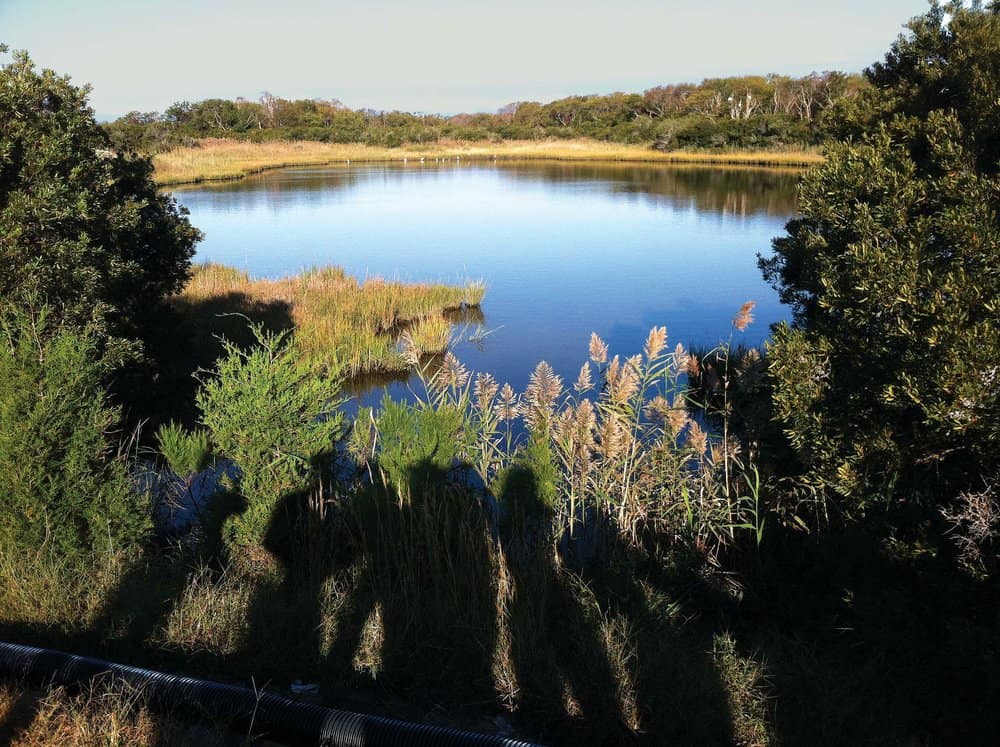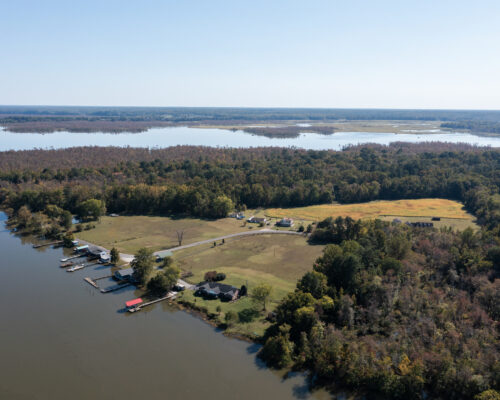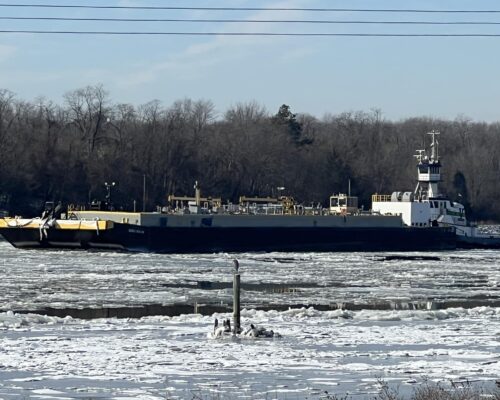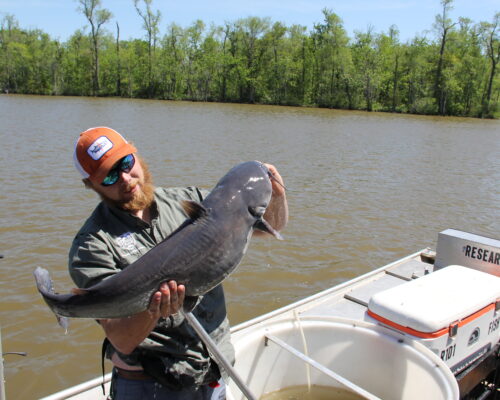Photo by: Chesapeake Bay Program
No matter where you go in the Chesapeake and its tidal tributaries, or what kind of vessel you’re traveling aboard, or even if you’re walking a trail, you’ll find marshes along the shore. They might be narrow fringes, or several hundred acres laced with winding guts on the inside of a river bend, or a thousand acres on the open Bay shore. All are built on accumulated sediment that forms fertile soil. Upriver freshwater, mid-river brackish, or lower Bay salt, the sheer biomass of plants that have adapted to growing with their roots in the water is huge. Ditto the Chesapeake’s bottomland hardwood, bald cypress, and Atlantic white cedar swamps. Their productivity is legendary, as is their value to the Chesapeake’s crabs, fish, water birds, and aquatic mammals, including us humans.
Those ecological values make any exploration of Chesapeake wetlands rich, but at this point in the year when late summer turns to early fall, there’s another reason—our marshes and swamps are simply lovely this time of year.
Some of my favorites at summer’s end are the tidal fresh marshes. These fringe the upper tidal rivers, from the Chickahominy, Pamunkey, and Mattaponi on the lower western shore to the headwaters of the Sassafras and the Bohemia on the Upper Eastern Shore. Other highlights are the Rappahannock’s big creeks from Tappahannock to Port Royal (lots of paddling access there), the Patuxent around Jug Bay (ditto), the Nanticoke above Vienna including Marshyhope Creek, the Choptank above Dover Bridge including Tuckahoe Creek, and the Chester above Deep Landing.
Although strongly tidal, these waterways all have low salinities of 0 to 3 parts-per-thousand (about a tenth of seawater salinity), which allows a wide range of species to grow on those fertile soils. At the end of August and the beginning of September, the most obvious plants are wild rice, growing 5 to 8 feet tall, with grains forming in their stove brush-shaped seed heads and then “shattering” (dropping) by the middle of the month. Below the tall rice will be a feast of greens of different shades, from dark green giant bulrush to bright, broad-leaved arrow arum. Less obvious in the marsh’s interior but vital to birds is the light green, low-growing, seed-bearing rice cutgrass. Also small but nutritious are two members of the buckwheat family, dotted smartweed with its white seeds and tearthumb, with pink seeds. Interspersed with them will be pickerelweed with purple, finger-shaped blossoms, marsh hibiscus with its showy, white blossoms surrounding crimson centers, and small, bright-red cardinal flowers. You might even see some orange Turk’s cap lilies.
Most of these plants are annuals, reproducing with seeds each year. Thus, all the greenery that is so bright and full now will fade by mid-month and turn to stubble in October and November as surely as will a cornfield after harvest. That mass fade will open an opportunity for September’s cleanup hitter, tickseed sunflower (“butterweed” to folks on the upper Patuxent around Jug Bay), which will spread its golden carpet as the other annuals fade. Its nutritious seeds will feed arriving waterfowl too.
In the mid-rivers, the most stunning visual scenes will come a little later, as the hardwood trees along the banks start to turn to fall colors in October. Pick a clear afternoon and make sure to have the sun at your back, preferably looking along a straight reach of water. From yellow sycamores, through flaming red maples, to deep red sweet gums, the colors lining that corridor will leap out as the sunlight sets them afire.
My favorite vantage point for that experience is along the Rappahannock just below Laytons Landing, with the light igniting the trees for several miles on both sides before setting the tawny sandstone of Fones Cliffs aglow at the turn by the Beverly Marsh. Catch the light right and it’ll make you stop to drink it in. If you’re lucky, as I once was, a mature bald eagle or two will float down gently as leaves to light on the trees. But the Rappahannock doesn’t have a monopoly on such experiences. You’ll find dozens of places where that kind of light sets up on the marshes.
Along the lower Bay shore, the colors are more muted. High salt concentration reduces the number of species that can tolerate this environment. Those that can, will grow there in great profusion. The cordgrasses (intertidal smooth cordgrass and high-marsh saltmeadow hay) will begin to fade from green to shades of gold before turning brown in November. In their midst, seaside goldenrod will add its splash of bright color while black needlerush introduces a contrasting dark gray. In the lower Bay marshes, the aptly named saltwort injects dabs of red.
Finally, if you have an opportunity to explore one of the Chesapeake’s bald cypress waterways this fall, take it. These trees are one of only two North American species of conifer that is deciduous (the other is larch). Beginning in October, cypress along the Chickahominy, Dragon Run at the headwaters of the Piankatank, Patuxent’s Battle Creek, and the Pocomoke will begin turning soft colors of orange heather to complement the reds and yellows of the adjacent upland hardwoods.
Prime time in the Chesapeake’s wetlands is upon us. Get out there and soak it in!




